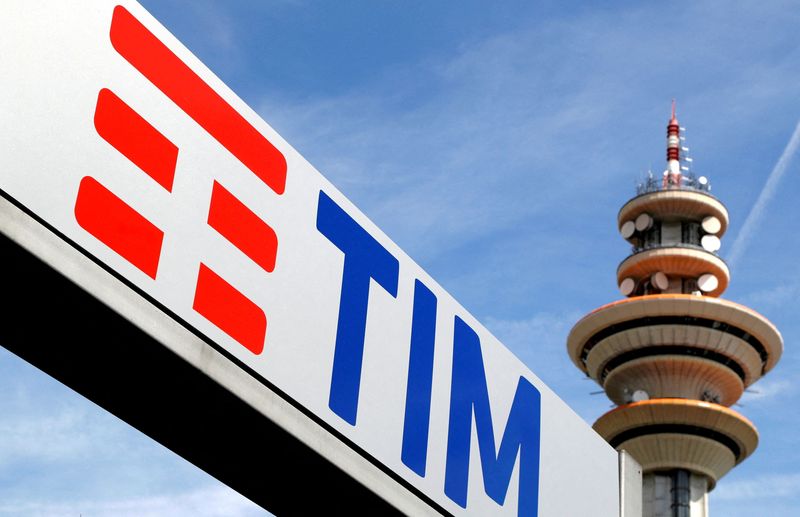By Elvira Pollina
MILAN (Reuters) - The head of Telecom Italia (BIT:TLIT) (TIM) will set out his plans for Italy's biggest telecoms company on Thursday, pinning his hopes on a break-up of the business to turn the page on years of turmoil.
Pietro Labriola, TIM's fifth CEO in six years, wants a fresh start by separating the company's fixed grid from its services business. The tricky part, as ever, with TIM will be satisfying all of the stakeholders.
TIM, the heir to the former national phone monopoly, is saddled with 23 billion euros ($24.03 billion) of net debt partly linked to multiple leveraged buyouts, and it is facing shrinking revenues in its fiercely competitive home market.
The latest revamp plan involves a possible deal to combine its fixed network infrastructure, internally valued in the region of 20 billion euros, including debt, with that of its smaller rival Open Fiber, controlled by state lender CDP.
Bringing them together would create a single national network champion to look after the provision of wholesale broadband connections in Italy.
To lay the ground for such an outcome, Labriola intends to spin off TIM's domestic access network and international cable business Sparkle.
This business - so-called NetCo - could assume about 10-11 billions euro of Telecom Italia's net debt and take up some 21,000 workers, a half of TIM's 42,500 domestic staff, sources familiar with the matter said.
Cash proceeds stemming from the potential network deal with Open Fiber will help further reduce TIM's debt pile below 10 billion euros, one of the sources said.
BROADBAND PLAN
The execution of the break-up plan could take 18 months and at present is mostly reliant on a network deal with Open Fiber.
Under a preliminary pact sealed in May, parties are looking for a binding agreement aimed at combining TIM's network assets with those of Open Fiber by the end of October.
In a kind of back to the future move, CDP would become the dominant shareholder in the combined entity, with TIM likely exiting or holding only a residual stake to focus on its service businesses.
But such a project, advocated by Treasury-controlled CDP which is also TIM's second largest investor, has had a number of false dawns over the years.
"Any deal is still to be agreed and faces numerous challenges including asset valuation", David Wright, analyst at BofA Global Research said in a report.
Vivendi (OTC:VIVHY), TIM's largest shareholder, has cranked up the pressure after a source close to the French group said it wants TIM to value its fixed grid at 31 billion euros ($33 billion) in any deal, a price tag deemed excessive by analysts..
Investment funds KKR and Macquarie, which are minority investors in Telecom Italia's secondary network and Open Fiber respectively, have joined talks over the tie-up and will have a say.
"Regulation could also be a challenge, as the merger could create a dominant national wholesale network", said Wright.
BREAKING UP THE BUSINESS
Under Labriola's plan, TIM's service operations will include Brazilian-listed unit and TIM's domestic service activities, which will be split in two units, each focusing on their own business model and with their own financial targets.
Besides a consumer arm, an enterprise company will combine connectivity services for big corporate and public administration clients as well cloud, cybersecurity and Internet of Things businesses.

Such an entity - now generating about 3 billion euros in yearly revenue - will target sales of 4.9 billion euros by 2030 and could be carved out to favour the entrance of financial investors.
($1 = 0.9572 euros)